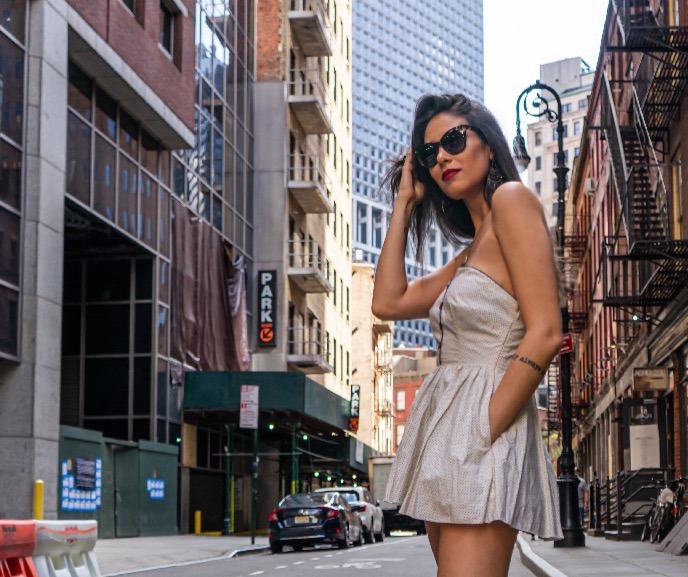INSIDE THE FASHION INDUSTRY – Fashion Incubators 2.0: How New Programs Are Funding Emerging Designers in a Post-Investor Era
- Barbara Sessim

- Oct 29
- 3 min read

In the world of fashion business, emerging designers have traditionally looked to investors - angel backers, venture capital firms, corporate partnerships - to provide the capital needed for growth, production, marketing and scaling. As I discussed in my earlier piece “Working With Investors”, attracting the right investor requires a solid business plan, a compelling brand identity, and clear terms so you don’t surrender creative control. Barbara Sessim
But as the financial landscape shifts, markets become more cautious, supply chains more exposed, and consumers more demanding, another model is gaining traction. Enter the era of fashion incubators and accelerators: programs designed to support emerging designers through mentorship, production access, shared infrastructure and what is often equity‑free assistance. In other words: Investing in you, not taking you.
Re‑thinking the investor path
When you work with investors, you gain capital, and often access to networks, markets and resources. In the “Working With Investors” article I pointed out key steps: a thorough business plan that outlines vision, goals and how you’ll deliver; a portfolio of your past work; and clarity on what you’re willing (or not willing) to give up. Barbara Sessim
Still, even when you secure funding, the pressure is real: scaling fast, delivering quick returns, and sometimes sacrificing brand ethos or authenticity to satisfy investors.
Why incubators are becoming the smarter option for many
Incubators represent a shift from the “grow fast or die” paradigm to a more deliberate, quality‑driven growth strategy - something especially aligned with emerging brands that emphasize craftsmanship, sustainability and story. These programs typically offer:
Shared infrastructure: studio space, sampling rooms, workrooms, and connections to small‑batch manufacturers, reducing your fixed costs and entry barriers.
Mentorship & business education: from costing and supply chain planning to marketing and legal frameworks.
Community & network: fellow designers, industry experts, buyers and media, which helps you build relationships beyond mere capital.
Equity‑free or low‑equity support: you retain brand ownership, creative control and your long‑term vision.
Case study snapshots
Consider an incubator in the U.S. (for example the Saint Louis Fashion Incubator) that offers affordable studio space and access to manufacturing for designers in a two‑year cohort. Meanwhile programs like the Ethical Fashion Initiative provide African designers with sourcing, production and market‑readiness support without demanding equity. These models reflect a new strategic launchpad for brands that do not want to hand over ownership early.
For the designer: How to decide between investors and incubators
The key is choice and clarity! From your earlier investor‑focused blog, the questions still stand: Do you need a large capital injection? Are you willing to give up a portion of your company? Do you prioritize speed and scale over control and quality? As incubators gain prominence, you now have more options.
If your priority is creative independence, a clear brand ethos, controlled growth and sustainable supply chain practices, an incubator can provide an ecosystem tailored for you. On the flip side, if you’re chasing rapid expansion, high‑volume retail deals and you’re comfortable relinquishing some equity for a big jump, investor funding may still be valid.
Practical steps for emerging designers
Here are actions you can integrate:
Build a strong foundation: Whether looking for an investor or applying to an incubator, you need a business plan, cost model, brand story and proof of concept.
Explore incubator programmes: Research what they offer (studio access, production partners, mentorship), what they expect in return, application criteria and timelines.
Map your growth strategy: Do you prioritize slow, value‑driven growth or fast scaling? This will inform whether you aim for capital investment or ecosystem support.
Negotiate intelligently: Even incubators can ask for percentages or fees - treat those terms seriously. When dealing with investors, negotiate equity, terms and network value.
Leverage networks and mentors: Whether via investors or incubators, relationships will open doors to media, buyers, suppliers and co‑designers.
Maintain brand integrity: No matter what model you choose, your creative control, production ethics, and design identity must remain anchored.
Why this matters now
The fashion industry is evolving: investment is tighter, supply chain disruption remains real, and consumers increasingly value authenticity, local production, traceability and sustainability. Incubators enable designers to respond to these demands while minimizing dependency on big‑money models. For new brands especially in developing markets, this model may offer the best chance to launch with integrity and growth potential.
If you’re an emerging designer ready to elevate your brand, don’t wait for the “perfect investor” to come knocking. Explore fashion incubator programmes now, evaluate how they can give you production access, mentorship and network support while preserving your independence! Schedule a free 30-minutes strategy Call with me and let’s discuss investor VS incubator models and what works best for your brand. Your brand’s future should be built by you, not dictated by others.
Schedule a free 30-minutes Strategy Call below:







Comments